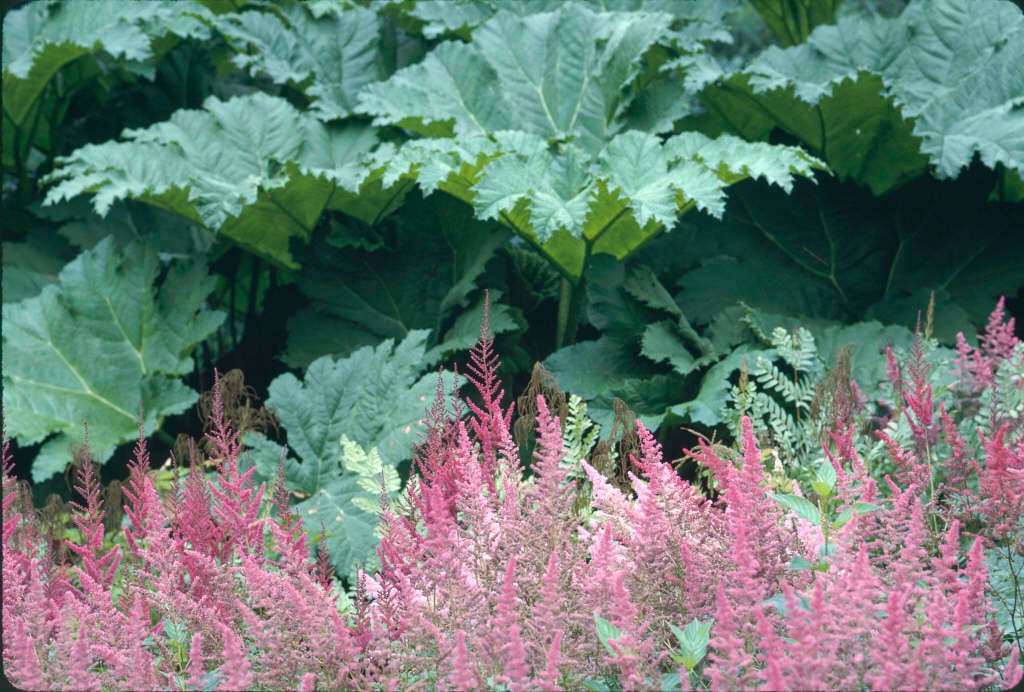Gunnera manicata Linden ex André
giant rhubarb
A very robust herbaceous perennial, forming a spreading clump of lobed, rounded, rough-textured leaves with spiny stems 1-2m in width. Tiny red-brown flowers are borne in erect panicles to 1m in height. Although there are many plants sold under this name, it is highly likely that they are actually the hybrid Gunnera × cryptica. Gunnera tinctoria / G. × cryptica are considered invasive and should not be cultivated. Strict rules apply in the UK for Gunnera tinctoria and G. × cryptica – it is an offence to plant or cause these to grow in the wild. They are banned from sale and gardeners already growing these plants should undertake measures to prevent spread beyond their garden and ensure correct disposal of plants. Existing plants in gardens do not have to be removed, but any excess material should be disposed of either by burning on site or taking to a waste processing centre. These rules do not apply to G. insignis and G. killipiana, but these are not hardy in most gardens. See cultivation notes for further advice
Size
Ultimate height
Time to ultimate height
Ultimate spread
Growing conditions
Moisture
pH
Colour & scent
| Stem | Flower | Foliage | Fruit | |
| Spring | Green | |||
|---|---|---|---|---|
| Summer | Brown Red | Green | ||
| Autumn | Green | Green Red | ||
| Winter |
Position
Aspect
Exposure
Botanical details
- Family
- Gunneraceae
- Native to GB / Ireland
- No
- Genus
Gunnera may be evergreen or herbaceous rhizomatous perennials, and range from small creeping plants to very large with huge leaves. The flowers are small, borne in narrow panicles or spikes and may be followed by small berry-like fruits
- Name status
Correct
- Plant range
- Brazil
How to grow
Cultivation
Although there are many plants sold under this name, it is highly likely that they are actually the hybrid Gunnera × cryptica. Gunnera tinctoria / G. × cryptica are considered invasive and should not be cultivated. Strict rules apply in the UK for Gunnera tinctoria and G. × cryptica – it is an offence to plant or cause these to grow in the wild. They are banned from sale and gardeners already growing these plants should undertake measures to prevent spread beyond their garden and ensure correct disposal of plants. Existing plants in gardens do not have to be removed, but any excess material should be disposed of either by burning on site or taking to a waste processing centre. These rules do not apply to G. insignis and G. killipiana, but these are not hardy in most gardens. See invasive non-native species for further advice
Propagation
Please see cultivation notes
Suggested planting locations and garden types
Get involved
The Royal Horticultural Society is the UK’s leading gardening charity. We aim to enrich everyone’s life through plants, and make the UK a greener and more beautiful place.
